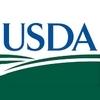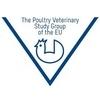Explore all the information on
Poultry vaccines
Disease prevention by vaccination is an integral part of flock health management protocols. Active immunization using live vaccines is the current industry standard. Routinely used vaccines in chickens include MDV, NDV, IBV, and IBDV, and in turkeys NDV and HEV. Newer vaccines, including molecular recombinants in which genes of immunogenic proteins from infectious agents are inserted into a live viral vector, are also being examined for commercial use. Efforts are under way to enhance vaccine efficacy by the use of adjuvants, particularly cytokines. The vaccine delivery systems include in ovo injection, aerosol, spray, drinking water, eye drop, and wing web injection. The in ovo vaccination procedure is relatively new and at the present time it is used primarily to vaccinate broiler chickens against MDV. Birds respond to vaccines by developing humoral and cellular immune responses. There are two main types of vaccine available for poultry: live or killed.
...
Comments : 0
Recommendations: 0
Highlights from the conversation with Johan Van Erum, Derek Detzler, Maria Elena Rubio and Horacio Gamero, who joined Elizabeth Santin for this roundtable, during the 1st PoultryUniverse Coccidiosis Congress in Curitiba, Brazil....
Comments : 21
Recommendations: 3
Necrotic enteritis (NE) is one of the top enteric infectious diseases in commercial broiler chickens that is caused primarily by Clostridium perfringens (CP) A/G strains and responsible for around $6 billion economical loss worldwide. Coccidiosis is the major predisposing factor for NE. With gradual reduction and eventual withdrawal of antibiotic growth promoters from animal feed due to public and regulatory pressures, alternatives to antibiotic approaches assume top- priority for...
Comments : 0
Recommendations: 1
...
Comments : 0
Recommendations: 0
Introduction. Salmonella Gallinarum with the biotypes Gallinarum and Pullorum causes two septicaemic diseases in poultry: Fowl Typhoid and Pullorum Disease. The former Salmonella Pullorum serovar is not recognised anymore as such. Both biotypes are differentiated by a few biochemical and molecular tests. This bacterium is highly adapted to produce a septicaemic disease in birds. In general all other animals’ species...
Comments : 63
Recommendations: 2
.jpg&w=3840&q=75)

Jonathan Cade comments on his new role as Chairman of the U.S. Poultry & Egg Association
Suggested link
INTRODUCTION Newcastle disease virus (NDV) is Avian avulavirus type-1 that belongs to the genus Avulavirus of the family Paramyxoviridae (Swayne and Glisson, 2013). Newcastle disease virus isolates vary in their pathogenicity to chickens and may include at least 3 pathotypes; lento-genic (low virulence), mesogenic (moderate virulence), and velogenic (high virulence). Velogenic NDV remain a major threat to the poultry industry because of high mortality and reduced egg production...
Comments : 2
Recommendations: 0
Avian coccidiosis is one of the most economically damaging infectious diseases affecting poultry. The etiologic agent is Eimeria spp., an obligate eukaryotic intracellular parasite belonging to the phylum Apicomplexa, which infects chickens’ intestinal tracts and is transmitted through a fecal-to-oral route (7,49). Clinical manifestations of infection include damage to the intestinal epithelium, decreased nutrient absorption, inefficient feed utilization, and impaired growth rate,...
Comments : 0
Recommendations: 0
.jpg&w=3840&q=75)

Introducing Afla-V ONE: Fast, precise aflatoxin detection for complete feeds and pet foods
Suggested link
Brian Jordan (University of Georgia) presented his research on clinical signs and replication of Infectious Bronchitis Virus, during IPPE 2020 in Atlanta, USA....
Comments : 2
Recommendations: 3
Introduction Newcastle disease (ND) is considered one of the most important poultry viral diseases in terms of worldwide distribution and economic impacts. The NDV is classified into lentogenic, mesogenic, and velogenic strains according to the pathogenicity in chickens. The NDV is classified as a member of the orthoavulavirus genus of subfamily Avulavirinae in the Paramyxoviridae family. Its genome is single-stranded negative-sense RNA of...
Comments : 5
Recommendations: 1


Will New Version of GMP Boost the Veterinary Drugs Industry?
Suggested link
1. Introduction Escherichia coli is a Gram-negative bacterium that typically inhabits the intestine of vertebrates and is considered a usual member of the digestive flora in animals. However, under favorable circumstances, it may acquire genes associated with pathogenicity/virulence and cause clinical disease in most domestic farmed species. Colibacillosis is a systemic fatal disease, which occurs when an E. coli strain escapes digestive barriers and invades the internal organs....
Comments : 0
Recommendations: 0
1. Introduction Newcastle Disease (ND) is considered one of the most critical diseases affecting poultry in sub-Saharan Africa. An important number of outbreaks per year are projected for some countries in the area, with a significant economical negative impact and deterioration of food security [1–3]. Immunization with inactivated or live-attenuated ND vaccines, although protective, has some disadvantages such as the production of vaccines using specific pathogen-free...
Comments : 0
Recommendations: 0
Vaccines are stored at Tpt between 2 - 8ºC, If it rises above 8ºC its potency deteriorates but If it is stored below 2ºC what are the effects? As its a practice in India to store Live Vaccines in de freezers and Inactivated Vaccine at Room Temperature which is more than 27ºC. In some parts it is more than 40ºC. ...
Comments : 0
Recommendations: 0
Introduction Viral safety and potency are considered the two cornerstones for production of satisfactory vaccines. The three main aspects of viral safety of vaccines are the residual pathogenicity of vaccine virus, the presence of extraneous agents, and the inadequate inactivation of vaccine virus (Dodet et al. 2010) . Vaccine safety mostly have the priority over the potency; as the problems originating from the use of...
Comments : 0
Recommendations: 0


Effect of Bacillus subtilis DSM 32315 on the intestinal structural integrity and growth performance of broiler chickens under necrotic enteritis challenge
Suggested link
The poultry industry constitutes a significant sector of Egypt agriculture. In Egypt, millions of birds are produced yearly with a value exceeding LE 60 billion. Broiler chickens are the largest segment of the industry. Birds raised under commercial conditions are vulnerable to environmental exposure to a number of diseases. Therefore, disease prevention by vaccination is an important part of flock health management protocols. Active immunization using live vaccines is the current industry...
Comments : 3
Recommendations: 1
Kindly let me know, what is the scope of developing Infectious Bronchitis vaccine using Indian Variants for use in Indian Poultry Industry? ...
Comments : 0
Recommendations: 0
...
Comments : 0
Recommendations: 0
...
Comments : 0
Recommendations: 0
...
Comments : 0
Recommendations: 0


.mp4&w=3840&q=75)

















.mp4&w=3840&q=75)












